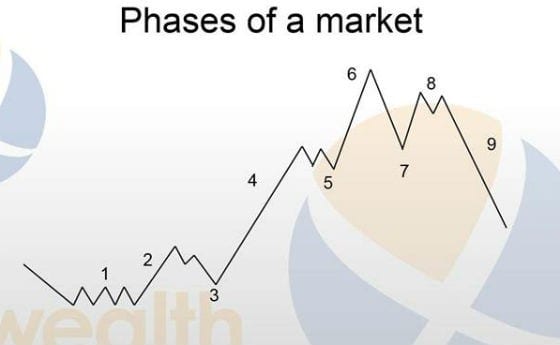How would you like to touch thousands of dollars in gold? Even better, what if it was yours?
Well, in 2009 if you were holding gold you would have seen the price appreciate from around USD $1,000 an ounce to dizzying heights of around USD $1,920 an ounce by September 2011, equating to growth of around 85 per cent. However, it wasn’t until after gold peaked and started the decline that a lot of investors bought gold to diversify their risk. Unfortunately, this was poor timing on the part of the uneducated investor. What can we learn from this so as to profit?
Before making any investment decision understand the reality of the market you are investing in. Gold, like other investments is cyclical in nature and therefore at times will be high risk to hold. So trying to diversify without this understanding is high risk.
One of the keys to unlocking your investment gold is in understanding when is a lower risk time to buy and when is a good time to sell. To do this you need to know what is occurring when prices go from low to high and high to low. Sounds simple, and it is, and yet so many people overlook how powerful knowing this can be.
You will already know that market prices, including gold, run on fear and greed. Having done years of research I have found plenty of evidence to show how history repeats and how the masses continue to be driven by their emotions, not logic, when making investment decisions. This makes it so much easier for those ‘in-the-know’ to read the market and to take money from the uneducated.
You need to know that most price cycles operate as shown on the chart below. This is a powerful tool that represents how any market will move over time. Whether you are investing in gold, the share market, currencies or something else where prices are transparent you will see this phenomenon.
I have broken up the chart above in terms of its phases with an explanation below:
- In the first phase of the cycle prices have stopped falling but media reports keep the uneducated fearful. That said, those ‘in-the-know’ begin slowly buying.
- The second phase is where the big money makers buy and the short term traders enter in search of quick profits. News reports are still mixed and so the herd doesn’t yet know which way to run.
- It is typical, after an initial rise, to see prices fall back as short term profit takers exit. During this time the masses are more likely to remain out of the market.
- The masses begin investing again, albeit cautiously, while a large portion of investors still remain out of the market. Those ‘in-the-know’ have already some nice profits to underpin returns.
- There is talk in the media about possible market tops, and traders and nervous investors exit here. Eventually the market breaks through the top of the sideways move to confirm the start of the next phase.
- The market will have its last hurrah and can be the most volatile as it makes a top and is now on its final stretch, when we typically see the masses pour in. The educated investors and the institutions are either already starting to pull back their capital or are preparing to do so.
- Volatility increases, prices swing wildly and fall from highs, news reports vary but the uneducated are drawn in by opportunities marketed to them to buy at cheaper prices.
- The market gets wound back up in a buying frenzy as prices have become so much cheaper than at the top. This is when money is changing hands from those with little or no knowledge to those ‘in-the-know’.
- In the last phase the music stops and a further fall unfolds, usually this is the most dramatic fall in the cycle. This is when the truth begins to emerge about the risks in this market, emotion takes hold and heavy selling occurs.
This is what happened with gold, so the next time you consider buying into an investment consider where it might be in the overall cycle. By simply understanding the bigger picture of a market cycle you will beat 90 per cent of investors.


